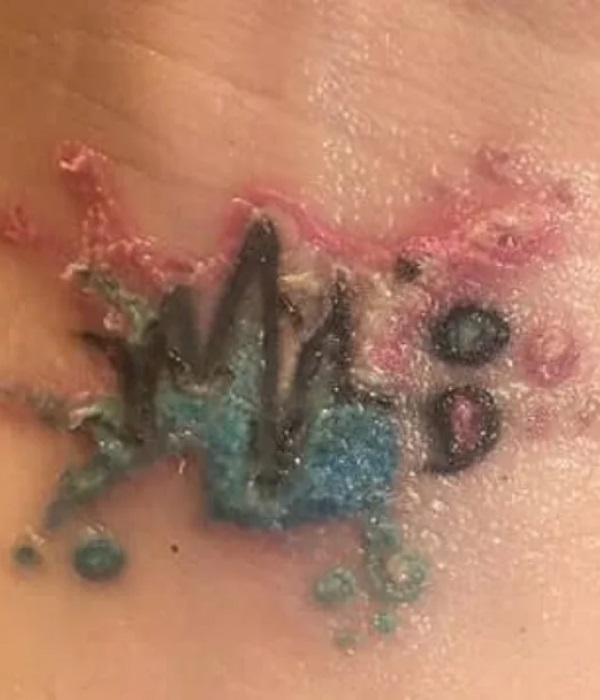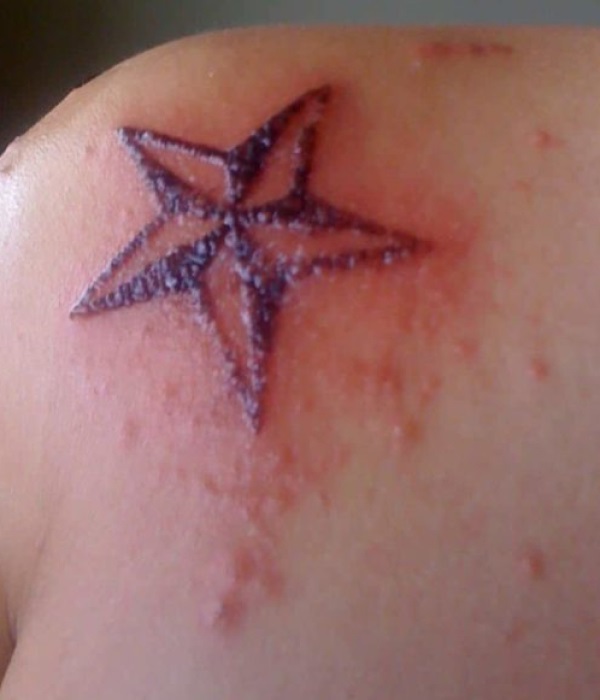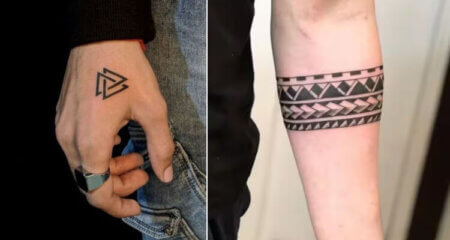
What is a Tattoo Infection?
Posted on
Have you got a tattoo infection? Or are you confused that it might not be? No worries; we’re here for your rescue. A tattoo infection is one of the most frequent issues that can occur if bacteria or any other pathogens enter the skin area tattooed. It can take place at the time of tattooing or when your skin is healing.
Infections not only ruin the aesthetic appeal of your tattoo but also pose a serious health risk if not treated. It is thus important to know how to treat, prevent, and even identify symptoms of tattoo infections for a safe and enjoyable tattoo experience. Here is everything you need to know.
What is a Tattoo Infection? Causes and Risks

An infection of a tattoo occurs when harmful bacteria, fungi, or viruses invade the newly tattooed skin. This is because tattooing involves puncturing the skin, which temporarily leaves it open to all harmful microorganisms.
Causes of Tattoo Infections:
Infections occur when harmful microorganisms such as bacteria, fungi, or viruses invade the newly tattooed skin. Some of the reasons for tattoo infection include the following:
- Unhygienic practices: Tattooing using unsanitized needles, equipment, or surfaces introduces harmful pathogens to the skin.
- Poor post-procedure care: Poor cleanliness after the procedure or exposure to a dirty and contaminated environment makes individuals more susceptible.
- Infected ink: Some tattoo inks are of low quality and are past expiration dates. Some are compounded from unsterile water that will contain bacteria and fungus.
- Weakened immune system: Individuals on immunosuppressive drugs or with medical conditions are more susceptible to infection due to their inability to ward off bacteria.
- Exposure to irritants: Exposure to irritants such as contaminated water, dust, or unsanitary surroundings may also cause infections.
Signs Your Tattoo Might Be Infected
The sooner an infected tattoo is detected, the better it is prevented from developing serious complications. The following are tattoo infection symptoms:
- Redness and swelling: While some redness is normal during healing, excessive redness or swelling that worsens instead of improving is a concern.
- Pain or tenderness: Pain around the tattoo, persisting or increasing in character, particularly when touched could be a sign of an infection.
- Pus or discharge: Yellow, green, or foul-smelling discharge from the tattooed area would be considered a very significant sign of bacterial infection.
- Fever or chills: The person is said to feel feverish or is getting chills possibly indicating systemic spread of infection.
- Skin changes: There may be the appearance of blisters, crusting, or bumps around the area where the tattoo was done. This is not a sign of healing. In the most serious cases, the skin might become necrotic and even turn black.
Stages of Tattoo Infection: What to Expect

Infections can progress through several stages with worsening symptoms if not treated.
1. Stage 1 (Days 1-3):
- Mild redness, swelling, and warmth in the tattoo area.
- Mild tenderness is normal but severe pain may be an infection.
2. Intermediate Stage (Days 4-7):
- Pus formation and enhanced inflammation.
- Worsening pain and redness that spreads beyond the tattoo area.
3. Advanced Stage (After a week):
- Fever, chills, and fatigue.
- Deep tissue involvement or abscess formation.
- Medical attention is important at this stage.
How to Treat an Infected Tattoo: A Step-by-Step Guide
If you believe your tattoo is infected, you need to react. Here’s a tattoo infection treatment to do:
- Clean the area: Use unscented mild soap and lukewarm water. Rinse the tattoo and then pat it dry using a clean towel. Don’t rub it.
- Apply an antiseptic: There are over-the-counter ointments that will have an antiseptic like Neosporin in it. These will inhibit bacteria growth. Avoid petroleum jelly unless you are directed by a professional. This stuff traps bacteria.
- Avoid scratching or picking: Avoid scratching or picking at the scabs or peeling skin, as this may make the infection worse and will delay healing.
- Take over-the-counter medication: Use pain relievers like ibuprofen to manage swelling and discomfort. Antihistamines may be useful when itching is severe.
- Consult a doctor: Get to a doctor if these symptoms persist, worsen, or spread (e.g., fever, large red streaks) quickly. The doctor should then prescribe antibiotics or treatments, depending on the depth of the infection.
Top Tips to Prevent Tattoo Infections
Prevention is always better than cure. To keep your tattoo infection-free, follow these precautions:
- Select a reputable artist: Find a professional tattoo artist with a clean studio and proper certifications. Check online reviews and licenses if available.
- Check for sterilization of equipment: The artist should use sterilized needles, tools, and disposable gloves. Open equipment from sealed packaging to prove that it has not been tampered with.
- Quality ink: Use approved, high-quality ink from good suppliers. Never use homemade or cheap inks.
- Obey aftercare instructions: Take proper care of your tattoo; this means keeping the tattoo moist and clean, using a product recommended by your tattoo artist. Wear gloves while handling the tattoo.
- Steer clear from contaminants exposure: Avoid using swimming pools, hot tubs, or direct sunlight because these contain environments breeding bacteria.
- Breathable clothing: Wear comfortable, loose-fitting clothes that are not touching the tattoo allowing air around it to encourage healing processes.
Conclusion
Getting a tattoo is exciting; however, it also comes with responsibilities to ensure proper healing and safety. The beauty of your tattoo and your overall health actually differ in the early stages of infection recognition, treatment, and preventive measures. Always make sure that you get a trusted tattoo artist, follow all aftercare routines seriously, and visit a health provider if there is a problem. With proper precautions, you can have your tattoo without any complications.


![30 Best Cobra Tattoo Ideas, Designs And Meaning [2025] 30 Best Cobra Tattoo Ideas, Designs And Meaning [2025]](https://www.trendingtattoo.com/wp-content/uploads/2025/01/Cover-2-450x240.jpg)


![Trending Tattoo Designs for Girls [2024] Trending Tattoo Designs for Girls [2024]](https://www.trendingtattoo.com/wp-content/uploads/2024/09/Trending-Tattoo-Designs-for-Girls_1-450x240.jpg)

